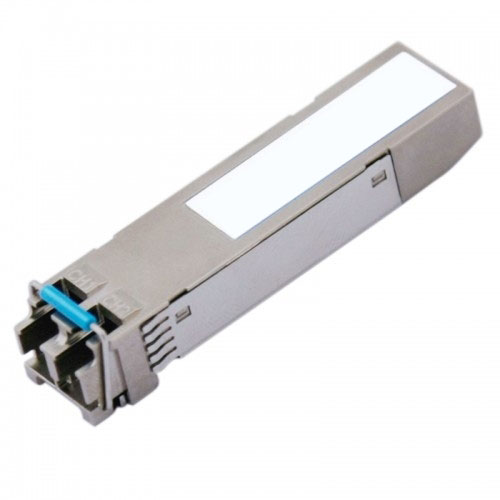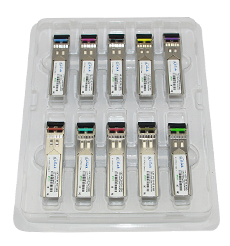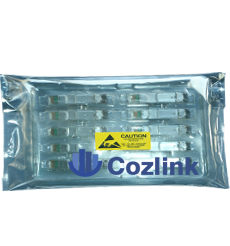- Related articles
- All Cisco DWDM-SFP10G-50.12's information (List price, Specs, Datasheet PDF, Compatibility
- Optical Transceivers for Cisco IE-2000-16TC-B Switch
- Optical Transceivers for Cisco SRW248G4-K9-UK Switch
- How to troubleshoot when network card stops working?
- What Is Network Interface Card Architecture?
- All Cisco DWDM-X2-58.98's information (List price, Specs, Datasheet PDF, Compatibility mat
- What Is Network Card PCI Express x16?
- Optical Transceivers for Cisco SG250-26P-K9-EU Switch
- Optical Transceivers for Cisco N5548UPM-6N2248TP Switch
- Optical Transceivers for Cisco IE-4000-4GS8GP4G-E Switch

The compact small form-factor pluggable (CSFP) is a version of SFP (small form-factor pluggable) with the same mechanical form factor allowing two independent bidirectional channels per port. It is used primarily to increase port density and decrease fiber usage per port. CSFP transceiver is a recent technology which began being used in networks in 2012.
CSFP transceivers support network systems, especially those deploying single fiber bidirectional transceivers in high density applications.
The CSFP transceivers are high performance, cost effective modules supporting 2.488Gbps and 20km transmission distance with SMF. The CSFP transceiver consists of three sections: a laser transmitter, a photodiode integrated with a trans-impedance preamplifier (TIA) and MCU control unit. All modules satisfy class I laser safety requirements.
The CSFP transceiver defines a transceiver mechanical form-factor with latching mechanism and a host board, SFP-like, electrical edge connector and cage. The dual-channel CSFP transceiver is compatible with the standard SFP cage. The single-channel CSFP transceiver is half the size of the industry-standard SFP packages.

These highly integrated compact transceiver modules will enable network system vendors to increase port density and data throughput, while reducing network equipment cost.
The common technical characteristics of CSFP transceiver are:
1. Operating Humidity: 0%~90% RH no condensing
2. Storage Humidity: 5%~90% RH no condensing
3. Saturated Optical Power: -3dBm
4. Average Output Power: -20~ -14dBm
5. Receiver Sensitivity: <-20dBm
6. Supply Current: <500mA
7. Power Supply: +3.3V single power supply
8. Power Consumption: <1W
9. Extinction Ratio: 9~17dB
10. Storage Temperature: -40~85°C
11. Number of Times of Hot-Pluggable: >200
The CSFP transceiver consists of 2-channel Bi-directional transceiver unit with five sections: the LD driver, the limiting amplifier, the digital diagnostic monitor, the 1310nm DFB laser and the 1490nm PIN photo-detector. The optical output can be disabled by a TTL logic high-level input of Tx Disable, and the system also can disable the module via I2C. Tx Fault is provided to indicate that degradation of the laser. Loss of signal (LOS) output is provided to indicate the loss of an input optical signal of receiver or the link status with partner. The system can also get the LOS (or Link)/Disable/Fault information via I2C register access. Conventional SFP will function when plugged into a C-SFP socket, at the same time no damage to C-SFP and host board if C-SFP module is plugged into a conventional SFP socket.


Cozlink manufactures and supplies all kinds of fiber optic transceivers. We provide OEM and third-party compatible solutions and we strictly control the quality. In this page, please using filter below to quickly find what you need. If there is not any product meet your requirement or this is not convenient for you, please tell us your questions and requirement.
Please click to check more related concepts:
| Transceivers Package | Ethernet standard | Application | Transceivers Wavelength | Fiber mode | Interface |
| SFP | 100Base-FX | Bidi | |||
| SFP+ | 1000Base-X | DWDM | Multi-mode | ||
| XFP | 1000BASE-T | WDM | |||
| QSFP+ | 10GBASE-SR | ||||
| X2 | 10GBASE-T | ||||
| GBIC | |||||
| CFP |





















































